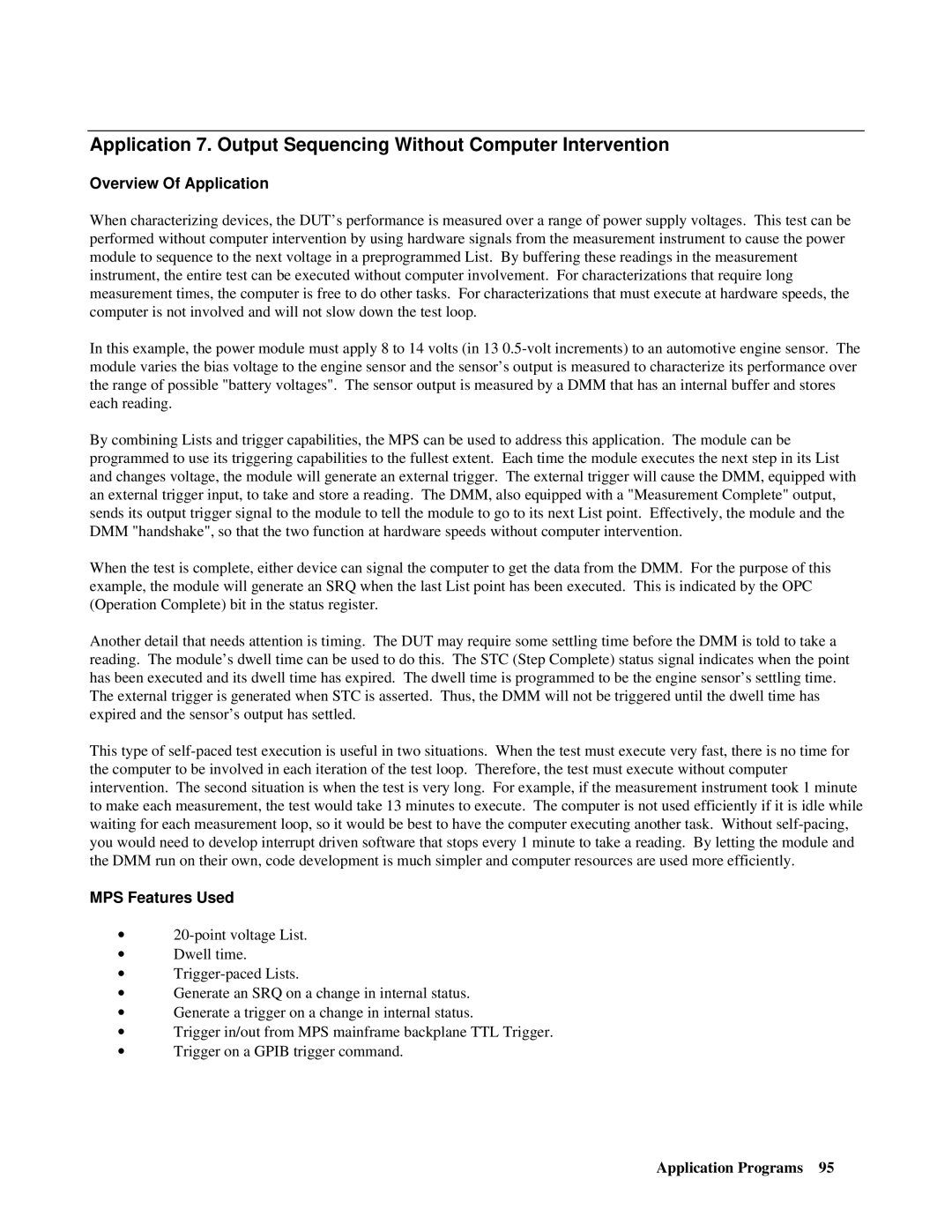Application 7. Output Sequencing Without Computer Intervention
Overview Of Application
When characterizing devices, the DUT’s performance is measured over a range of power supply voltages. This test can be performed without computer intervention by using hardware signals from the measurement instrument to cause the power module to sequence to the next voltage in a preprogrammed List. By buffering these readings in the measurement instrument, the entire test can be executed without computer involvement. For characterizations that require long measurement times, the computer is free to do other tasks. For characterizations that must execute at hardware speeds, the computer is not involved and will not slow down the test loop.
In this example, the power module must apply 8 to 14 volts (in 13
By combining Lists and trigger capabilities, the MPS can be used to address this application. The module can be programmed to use its triggering capabilities to the fullest extent. Each time the module executes the next step in its List and changes voltage, the module will generate an external trigger. The external trigger will cause the DMM, equipped with an external trigger input, to take and store a reading. The DMM, also equipped with a "Measurement Complete" output, sends its output trigger signal to the module to tell the module to go to its next List point. Effectively, the module and the DMM "handshake", so that the two function at hardware speeds without computer intervention.
When the test is complete, either device can signal the computer to get the data from the DMM. For the purpose of this example, the module will generate an SRQ when the last List point has been executed. This is indicated by the OPC (Operation Complete) bit in the status register.
Another detail that needs attention is timing. The DUT may require some settling time before the DMM is told to take a reading. The module’s dwell time can be used to do this. The STC (Step Complete) status signal indicates when the point has been executed and its dwell time has expired. The dwell time is programmed to be the engine sensor’s settling time. The external trigger is generated when STC is asserted. Thus, the DMM will not be triggered until the dwell time has expired and the sensor’s output has settled.
This type of
MPS Features Used
∙
∙Dwell time.
∙
∙Generate an SRQ on a change in internal status.
∙Generate a trigger on a change in internal status.
∙Trigger in/out from MPS mainframe backplane TTL Trigger.
∙Trigger on a GPIB trigger command.
Application Programs 95
